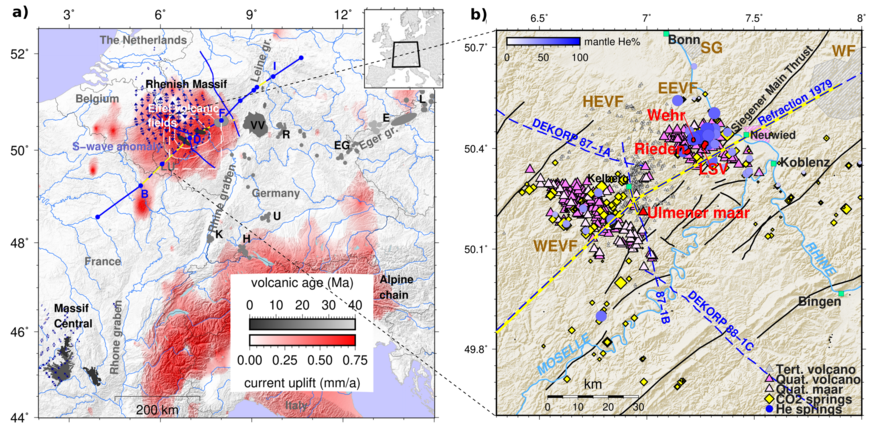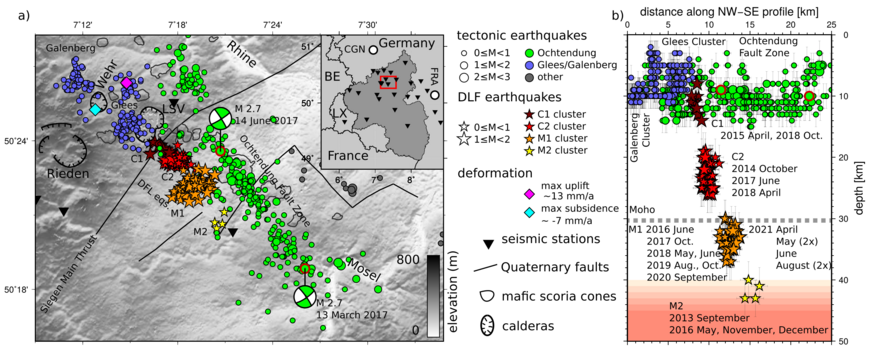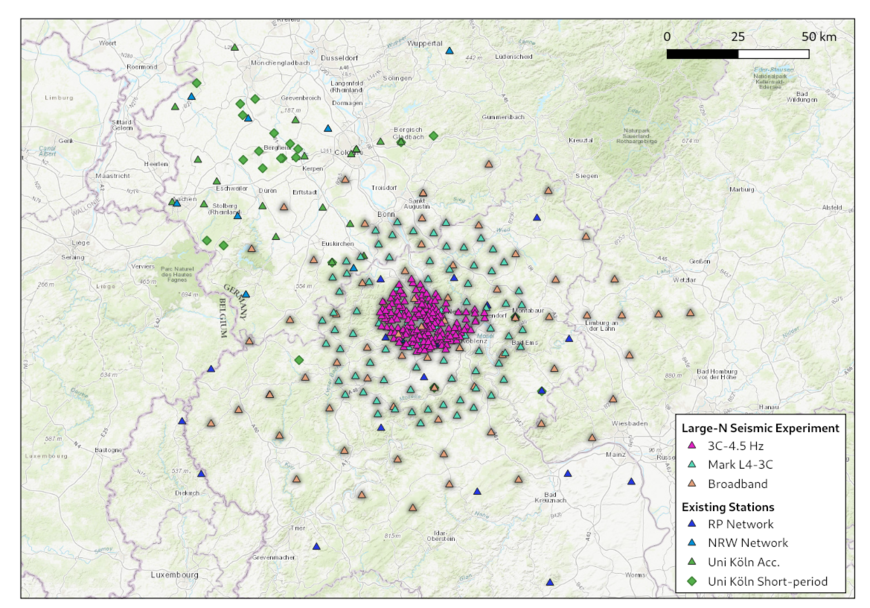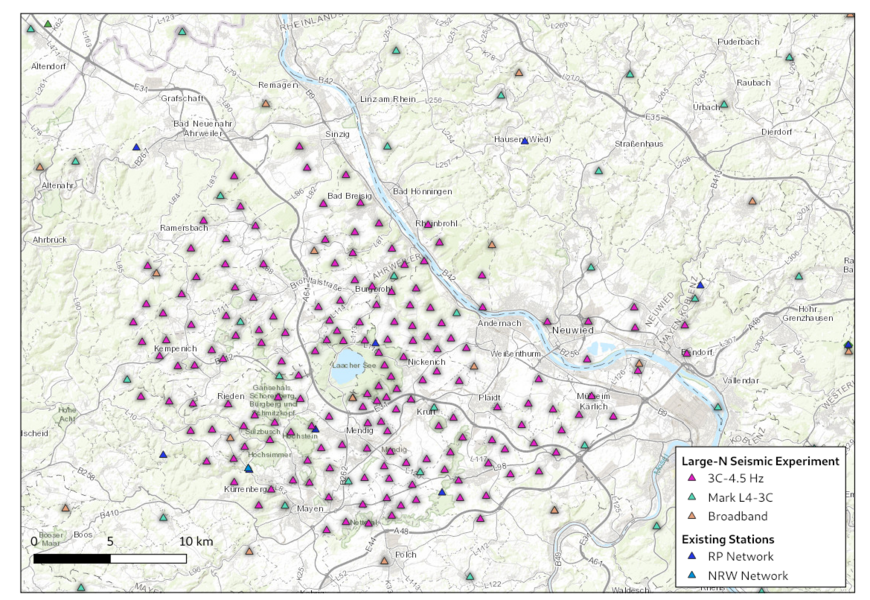Principal investigator: Prof. Dr. Torsten Dahm
Personnel GFZ: Dr. H. Woith, Dr. C. Milkereit, M. Isken, Dr. S. Cesca (Section 2.1)
Prof. Dr. C. Krawczyk, Dr. C. Haberland (Section 2.2)
Prof. F. Tilmann, Dr. X. Yuan, Dr. C. Sens-Schönfelder, (Section 2.4)
Prof. F. Cotton, Dr. M. Pilz (Section 2.6)
Partner: Dr. M. Hensch, Landeserdbebendienst Baden Württemberg; B. Schmidt, Landesamt für Geologie und Bergbau, Mainz; Dr. B. Endrun- Knapmeyer, Universität Köln; T. Meier, Universität Kiel; L. de Siena, Universität Mainz; M. van Camp, T. Lecocq, Royal Observatory of Belgium; A. Oth, European Center for Geodynamics and Seismology (ECGS)
Contact: Eifel-largeN@gfz-potsdam.de
Links: Poster Abstract DGG2022
Publications: Dahm, T., Stiller, M., Mechie, J., Heimann, S., Hensch, M., Woith, H., Schmidt, B., Gabriel, G., Weber, M. (2020): Seismological and geophysical signatures of the deep crustal magma systems of the Cenozoic volcanic fields beneath the Eifel, Germany. - Geochemistry Geophysics Geosystems (G3), 21, 9, e2020GC009062. https://doi.org/10.1029/2020GC009062
Hensch, M., Dahm, T., Ritter, J., Heimann, S., Schmidt, B., Stange, S., Lehmann, K. (2019): Deep low-frequency earthquakes reveal ongoing magmatic recharge beneath Laacher See Volcano (Eifel, Germany). - Geophysical Journal International, 216, 3, 2025-2036. https://doi.org/10.1093/gji/ggy532
short summary (in German)
FAQ - on planned research activities in the Volcanic Eifel
Project description:
The intracontinental volcanic systems of the Eifel are characterised by large basalt fields with hundreds of distributed cinder cones and maars with episodic activity since about 60 Ma (Fig. 1).
Since 2013, episodic occurrence of weak, deep, low-frequency earthquakes (DLF earthquakes) have been observed in the Eastern Eifel below Laacher See (Fig. 2), which are associated with the movement of magmatic fluids in the upper mantle and lower crust. Since the detection of the small DLF quakes is not easy, the seismic monitoring of the Eastern Eifel has been continuously improved by the Rhineland-Palatinate state earthquake service in recent years. The GFZ, together with the Earthquake Service and partners, has also started to install multi-parameter stations in the Eastern Eifel.
In order to better understand the magma system under the basaltic volcanic fields of the Eifel, the resolution of the crust and mantle structure is an essential prerequisite. Due to the moderate topography and easy accessibility, the Eifel region in particular allows the use of innovative, geophysical imaging and monitoring methods that can fully exploit the potential of a dense, temporary station network.
In the proposed Large-N pilot experiment, more than 350 seismic stations will be set up around the volcanic fields of the Eifel (Figs. 3, 4) and record earthquakes and background noise for about one year. The experiment is unique in Germany in terms of the number and density of stations and the specific research questions. Partners from universities and geological state services are actively involved in the planning and implementation as well as in the planned data analysis.
We invite students of geosciences to participate in the unique measurement campaign as interns or volunteers.





